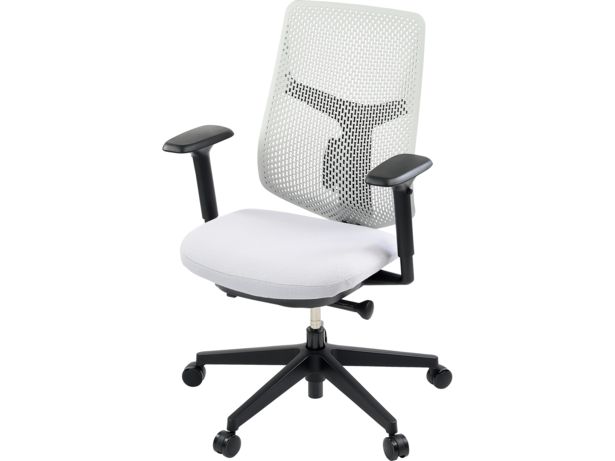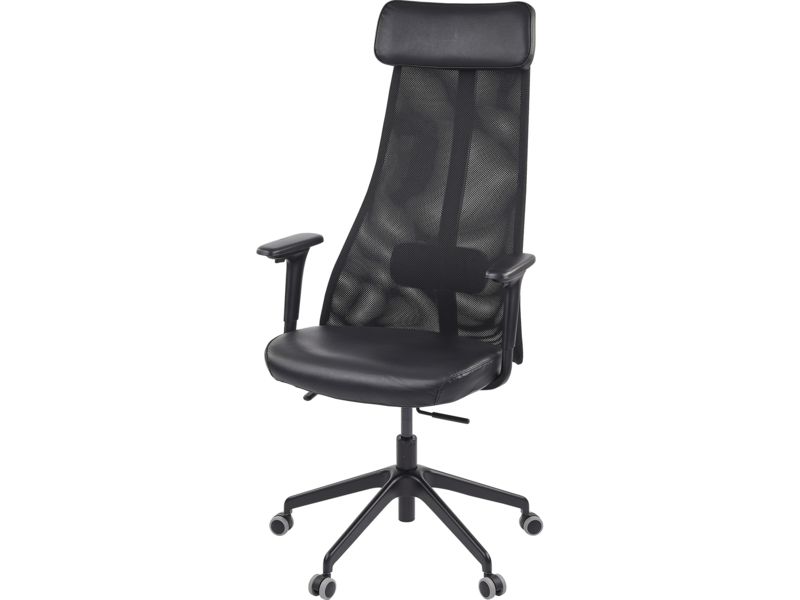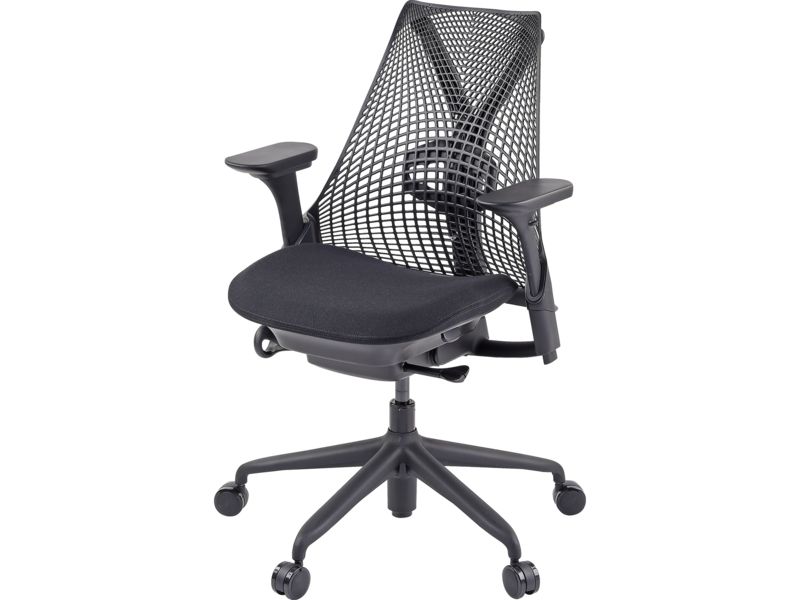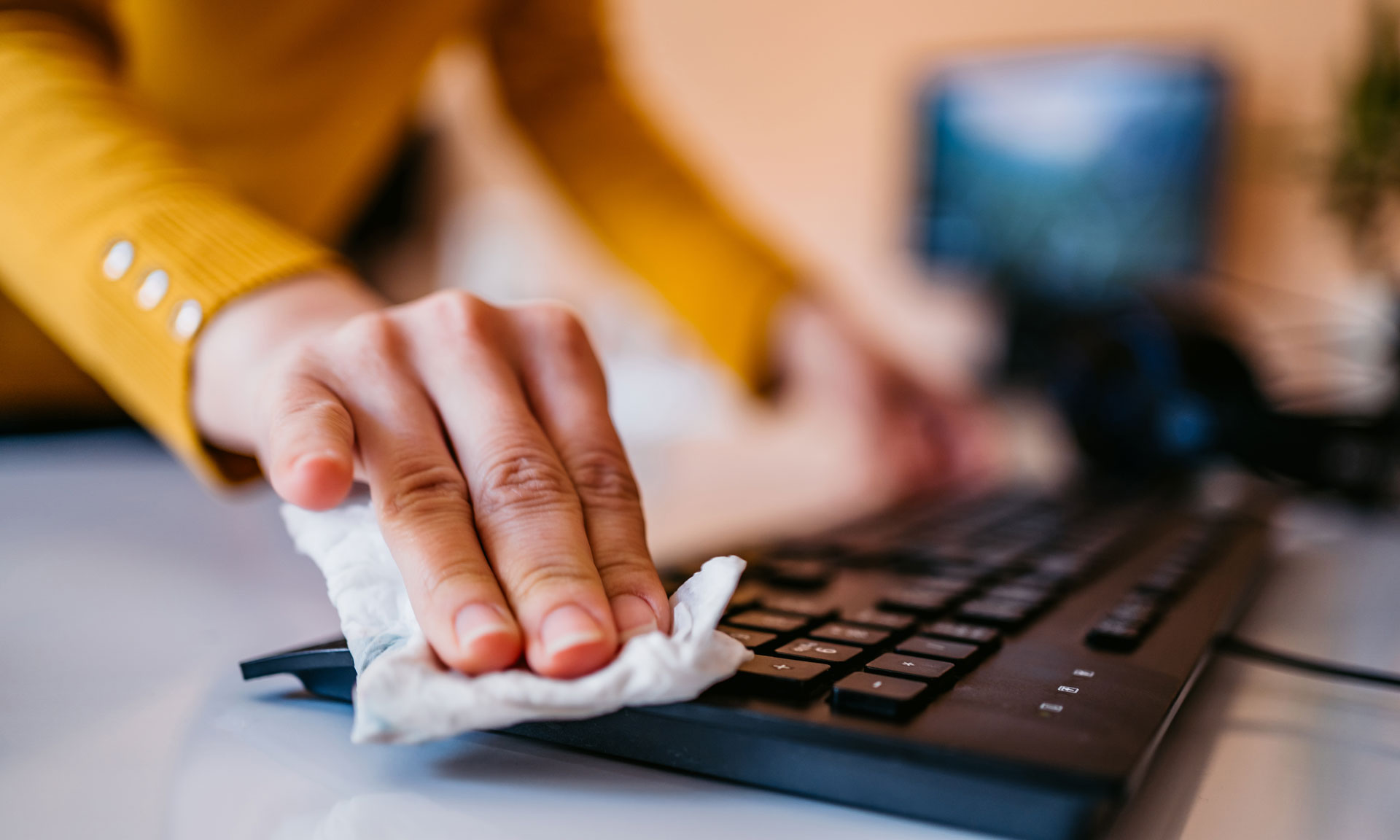Office chair safety and maintenance

When searching for an office chair, ergonomics is a factor. But it's important to think about safety too – especially as many of us now have them in our homes.
This guide highlights the potential hazards to look out for, such as whether your model is likely to tip forwards or backwards.
We also offer advice on how to clean and maintain your office chair – after all, they can be expensive. Read our guide to the best office chairs to find out how much you should spend to get a good office chair.
Be inspired to make home improvements. Sign up for our Home newsletter – it's free monthly
How to choose a safe office chair

Our rigorous testing has revealed tipping hazards, sharp edges, potential finger-trapping spots and more. Here's what to look for when buying a new office chair.
Look for a weight-sensitive recline
We test office chairs to see if they run the risk of tipping backwards or forward. Not only could you bang your head if you take a tumble, this could also pose a risk to children if they climb on the chair.
We perform overturn tests, where volunteers of different heights and body shape assess the tipping risk of each chair. All our Best Buy office chairs passed both the forward and backward overturn tests, but many of those we tested did not.
To avoid this safety risk, look for a chair with a weight-sensitive recline mechanism that adjusts when you lean forwards or backwards. Also, make sure your chair’s castors are in good shape.
Look out for sharp edges
According to the office chair safety standard BS EN 1335-2:2018, the edges of the seat, back rest and armrests in contact with the user should be rounded.
We tested several chairs where the edges and corners hadn’t been rounded off properly, and there were some sharp or rough sections. If you have a child, it’s easy for them to accidentally bump into or brush against the sharp edges, leading to cuts and bruises.
If you spot a sharp edge on your chair, file it down, cover it with soft materials such as adhesive foam strips, or replace it with safer alternatives. Check your warranties terms and conditions first if you plan to do something to your chair.
Be mindful of shear and squeeze points
Shear points involve parts sliding or moving past each other, potentially causing pinching or shearing. An example for office chairs is the moving parts of their reclining mechanisms, which, if not properly designed, could trap and injure your fingers.
Squeeze points or pinch points occur when parts come together or get very close, causing compression or ‘squeezing’. An example is a poorly designed height-adjustable armrest, where there’s a risk of your finger getting caught when adjusting it down.
While the safest office chairs cover these points to prevent injuries, we found a couple of shear and squeeze points where fingers or thumbs could be easily trapped. Testing them yourself is risky, so we recommend reading our office chair reviews as our experts have thoroughly assessed each model for safety.
Check for a fire safety label
Office chairs with upholstered sections, like foam or padded seats, must follow the Furniture and Furnishings (Fire) (Safety) Regulations 1988 and are required by law to have a permanent fire safety label. This label ensures the filling materials resist cigarette burns and other ignition sources.
If a chair you’re interested in lacks this label, don’t buy it – it doesn’t meet the legal requirements for sale in the UK.
Try before you buy
While Which? experts conduct thorough tests, it’s worth checking to see if a chair suits your needs. Shopping online is convenient, but visiting a store will allow you to see the office chair and sit in it to assess its durability, stability, and comfort.
Poor posture can affect your wellbeing. Read Are you sitting correctly? for advice on how to avoid back pain, be more productive and improve your wellbeing
How to clean your office chair

Cleaning your office chair doesn’t take long, and it could lead to fewer illnesses, as upholstery can provide an environment for bacteria to thrive.
However, office chairs come in a variety of types and materials, each of which needs to be treated differently.
- Mesh office chair The most straightforward office chair to clean. Start by vacuuming with the brush attachment to remove loose debris from the mesh and seat. Using soapy water and a clean cloth, wipe the mesh first, followed by the headrest (if any), seat, armrests, underside of the chair, base and castors. Clear any soap residue with a clean, damp cloth, and let it air dry.
- Fabric office chair Features upholstered seats and back in various textiles such as polyester and acrylic. As with mesh office chairs, vacuum the upholstered seats and backs using brush attachments. Review any labels for recommended cleaning products. If a water-based solution is suitable, use soapy water, with similar instructions to mesh office chairs. If the label prohibits the use of water-based solutions, turn to a dry-cleaning solvent, available in both liquid and powder forms.
- Leather office chair Maintaining leather and faux leather requires specialised products and frequent cleaning to make it last longer. Start by vacuuming with low suction, but don’t use a brush attachment as this could damage the grain of the leather. Use a leather-safe gentle foam cleaner, delicately wiping the leather with a clean cloth. Remove excess foam and allow it to dry. To prevent the leather from cracking, fading, or drying out, use a leather protector or conditioner. For areas not covered by leather, use soapy water to clean.
When to deep clean the castors
Deep cleaning your office chair’s castors is necessary when you see a layer of debris on its wheels. We recommend flipping your chair upside down and using a flat tool to gently scrape off the debris and shake off any fuzz stuck to the castor's casing. For hard-to-reach places, use cotton swabs or a pair of tweezers.
Remove the castors (some may need a screwdriver) and use a soapy cloth to thoroughly wipe them down. Allow the wheels to dry before reattaching them.
No home office setup is complete without a sturdy, spacious desk. Use our home office desk buying guide to pick the right one for you
How to maintain your office chair
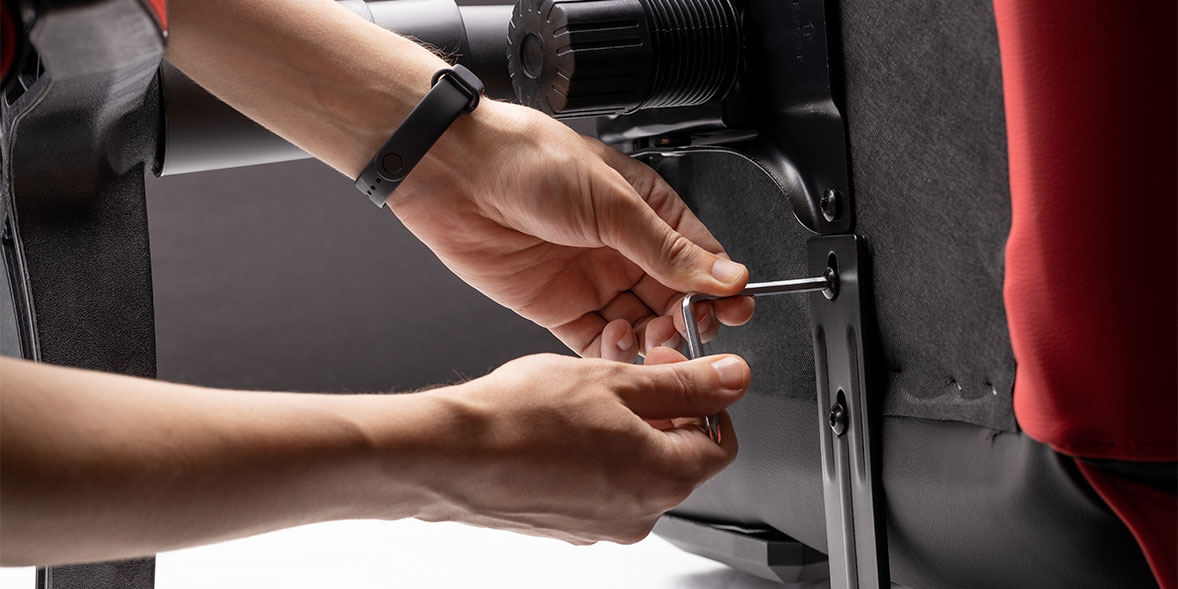
Regular maintenance will increase the longevity of your office chair, so you won't need to replace it as often. Follow this list of dos and don'ts:
- Check for loose or missing parts Inspect your chair for any loose or missing screws and bolts. Tighten or replace these parts to avoid an unstable chair and prevent any potential accidents.
- Lubricate your chair If you hear your office chair squeaking, it may need lubricating. Use WD-40 or other water-resistant lubricant to lubricate the moving parts of your office chairs such as the castors and reclining mechanism.
- Keep away from sunlight Direct sunlight can damage an office chair over time, causing degradation in fabrics and materials. While occasional exposure is fine, prolonged exposure can lead to colour fading and material stretching, making the chair less comfortable and supportive.
- Check the castors Aside from lubricating castors, check your castors every six months and replace them as needed. Worn-out or damaged castors can impair a chair’s mobility and can be a tipping hazard.
- Follow the weight limit Most office chairs have a weight limit, referred to as the maximum stated user capacity in our test. Overloading your chair can stress its durability and weaken its structure, potentially causing issues such as leaking or breaking the gas cylinder, cracking or bending the five-star base, collapsing the seat or backrest, and snapping off the castors.
- Use the chair on the correct surfaces Some office chairs like the Ikea Millberget Swivel Chair are recommended by the manufacturer for use only on specific surfaces, in this case, soft floors. This guidance helps prevent wear on the chair’s castors and five-star base, while also protecting your floors from potential damage caused by the castors.
Looking for a new chair? Read our office chair reviews to find out how we rated models from popular brands such as Herman Miller, Ikea and John Lewis

